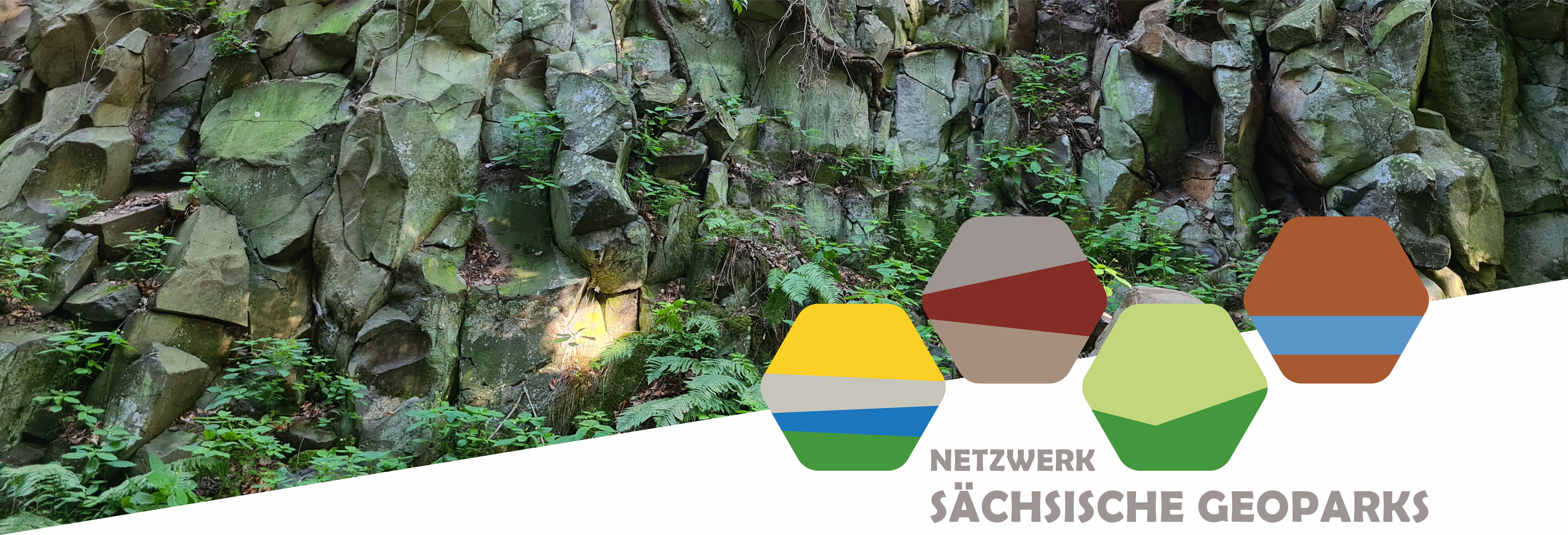

We are not the only area where special geological evidence from the geological past is visible, the three other geoparks in Saxony also have spectacular and unique things to discover. By combining the protection, care and valorisation of the geological heritage for tourism and environmental education, the geoparks contribute to the holistic and sustainable development of their respective regions.
The four Saxon geoparks ido not just focus on special geological phenomena or landscapes as part of the geological world heritage. They also focus on the diverse interactions between geofactors and landscape components as well as the connection between geological history, natural resources, nature, cultural history and industrial culture.
Set off on a journey to these geologically attractive regions!
-
-
The impressive culture and old mining landscape connects Germany and Poland. What the Ice Age left behind as a gigantic horseshoe-shaped glacier imprint was moulded by renowned garden designers such as Prince Pückler. Geotourism trails and themed cycle paths follow the constantly changing region along colourful waters, sunken forests and impressive sites of the glass and ceramics industry. Shady stream valleys, river meadows and diverse forest and moorland landscapes are home to an unimaginable variety of species.
Certifications: 2006 National GeoPark, 2011 UNESCO Global Geopark
Area: 578.8 km², of which 228.5 km² are in Saxony
Administrative districts: Görlitz, Spree-Neiße and Powiat Żary
Nine municipalities in Saxony (21 in total)
Two supervolcanic events 290 million years ago left behind a layer of various porphyry rocks over 600 metres thick in today's Geopark Porphyry Land. The people of the region have been utilising this treasure for centuries. Proud castles and palaces sit enthroned on rock faces and the unique Rochlitz porphyry tuff with its red colour adorns monasteries, churches and entire towns. Geological, cultural and industrial history are closely intertwined. Mountain ranges open up views of the Mulde valley, charming old quarries and fruit plantations. A fascinating landscape and cultural experience!
Certification: 2014 National GeoPark
Area: 1,200 km²
Administrative districts: Leipzig, North Saxony, Central Saxony
14 municipalities
With impressive rocky landscapes, wild and romantic valleys and evergreen forests, the Vogtland Geo-Environmental Park encompasses a multitude of geotourism destinations in a very small area. From the Bergen granite massif, phyllites and clay slates to the Eibenstock granite, it offers impressive a geological diversity. A special feature of the park is the Schneckenstein topaz rock and the world-famous Theuma fruit slate used as a building material. Between heaven and earth - from the space exhibition to a visit to the mine, there is something for everyone to experience.
Aiming for certification as a National GeoPark in 2025
Area: 388 km²
Administrative disctrict: Vogtlandkreis
12 municipalities
The Tharandt Forest Caldera, the former coal and uranium ore mines in the Döhlen Basin as well as the medieval silver and tin mines in the Eastern Ore Mountains are among Saxony's most important geological treasures. In the Geopark Saxony's Centre, outcrops of all geological eras can be reached on foot. Numerous fascinating geotopes, picturesque reservoirs and a well-signposted network of hiking and cycling trails guarantee an eventful time.
Certification: 2021 National GeoPark
Area: 713 km²
Administrative districts: Central Saxony, Saxon Switzerland - Eastern Ore Mountains
13 municipalities
-
